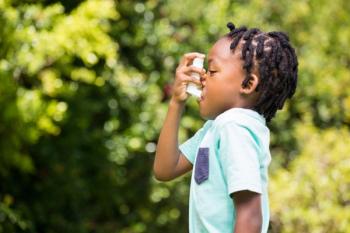
- Consultant for Pediatricians Vol 6 No 8
- Volume 6
- Issue 8
TTN--A Benign Condition or Precursor to a Chronic Illness?
Transient tachypnea of the newborn (TTN) has traditionally been seen as a benign, self-limited disorder that occurs within a few hours of birth and resolves within 72 hours. For years, we have been telling parents that this innocent condition has no long-lasting effects and is nothing to be concerned about. According to a recent study in The Journal of Pediatrics, however, we may need to rethink that advice.
What should we be telling parents?
Transient tachypnea of the newborn (TTN) has traditionally been seen as a benign, self-limited disorder that occurs within a few hours of birth and resolves within 72 hours. For years, we have been telling parents that this innocent condition has no long-lasting effects and is nothing to be concerned about. According to a recent study in The Journal of Pediatrics, however, we may need to rethink that advice.
Liem and colleagues1 used a health care database of over 16,000 infants born in 1995 in Manitoba, Canada, to examine the development of wheezing among full-term infants with TTN. Through the database--which by virtue of a universal health care system covers all children born in the area--the authors used diagnosis codes to identify affected infants. After excluding preterm infants and children who had moved out of the area, the authors identified 308 patients who had been followed for 7 years. These were separated into children with TTN alone (248 infants) and those who had TTN and other pulmonary insults (such as aspiration, respiratory distress, and intubation). Using hospitalization codes and physician visit codes, as well as prescription records, the authors determined which children had any form of wheezing by the time they were 7 years old as well as those with a maternal history of asthma.
Infants with TTN (alone or with other pulmonary insults) were at increased risk for wheezing later in childhood. The increase in risk was greatest among infants of mothers with asthma. The risk persisted even after adjustments were made for known TTN risk factors, such as cesarean delivery and male gender.
While other recent studies have also shown a relationship between TTN and wheezing,2 this information has not yet become a part of the guidance provided by most pediatricians. So when we discuss TTN with the parents of affected infants, what should we tell them?
One factor that complicates our discussion is that it is difficult to know which disorder is the initiator of the disease cascade. The relationship between TTN and maternal asthma indicates that children at increased risk for asthma may be more likely to have TTN as an infant. But it also is possible that TTN places infants at higher risk for asthma later in childhood. Liem and colleagues also found that most infants with TTN admitted to the neonatal ICU underwent workups for sepsis and were given antibiotics for 48 hours. They postulate that the antibiotics may have changed the gut flora, putting the child more at risk for asthma and allergies.
While we do not yet know which came first--the TTN or the asthma risk factors--we are starting to see that a relationship exists between the disorders. Rather than simply reassuring parents about the benign nature of TTN, we need to inform them that some (but by no means all) children with a history of TTN go on to develop asthma. In this way, parents can be on the lookout for wheezing and be appropriately educated about their child's health status. *
References:
REFERENCES:
1.
Liem JJ, Huq SI, Ekuma O, et al. Transient tachypnea of the newborn may be an early clinical manifestation of wheezing symptoms.
J Pediatr.
2007;151:29-33.
2.
Birnkrant DJ, Picone C, Markowitz W, et al. Association of transient tachypnea of the newborn and childhood asthma.
Pediatr Pulmonol.
2006;41:978-984.
Articles in this issue
over 18 years ago
Asymmetric Crying Faciesover 18 years ago
Cystic Hygroma in a 1-Year-Old Girlover 18 years ago
Hypertransaminasemia: A Diagnostic Dilemmaover 18 years ago
Toxic Epidermal Necrolysis Secondary to Anticonvulsant Medicationover 18 years ago
Winter 1979over 18 years ago
Linear IgA Dermatosis (Childhood Type) and Fixed Drug Eruptionover 18 years ago
Itchy Spreading Rash on Teen's Cheekover 18 years ago
Dental Disease: REFERENCESover 18 years ago
Feedback on Snake Bite: A Small Puncture Can Create a Large ProblemNewsletter
Access practical, evidence-based guidance to support better care for our youngest patients. Join our email list for the latest clinical updates.








